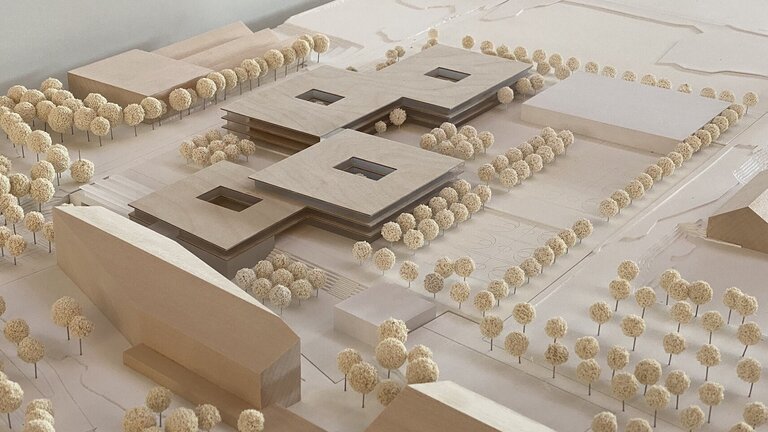From the 2025/2026 school year onwards, up to 1,900 children and young people will go to school on the Aschheim school campus in the Bavarian municipality of the same name. The special-purpose association of state-run secondary schools in the eastern part of Munich administrative district is expanding the intermediate school at the site and building a new grammar school. By doing so, the member towns of the Aschheim, Kirchheim and Feldkirchen special-purpose association as well as the administrative district of Munich are responding to the increasing need for schools. The focus is clearly on sustainability: the new school buildings will be constructed using a hybrid timber method and in compliance with the Efficiency House Plus standard. Stuttgart-based planning and consulting company Drees & Sommer SE is managing the project. Construction of the new school campus is scheduled to begin in the fall of 2022.
In 2018, the Bavarian Ministry of Education and Cultural Affairs had approved the application by the special-purpose association of state-run secondary schools in the eastern part of Munich administrative district to establish and build a new grammar school. The association deliberately opted for grammar schools at two different locations: the new extension to Kirchheim Gymnasium for 1,350 students, which is currently under construction, and Aschheim Gymnasium for up to 1,000 students. Operating two school sites avoids having one huge school, allowing the schools to remain personal with a friendly atmosphere. In parallel with this, the existing St. Emmeram Realschule in Aschheim is also being expanded and will in future offer up to 900 children and young people an attractive environment in which to learn, eat and play sports. On a site of around three hectares, the school campus will also include a cafeteria, an open all-day area for each school, a sports hall including a swimming pool, two apartments for teachers, a janitor’s apartment and the special-purpose association’s office. To ensure that the doors can be opened in time for the start of the new school year in September 2025, Drees & Sommer is providing project steering support for the special-purpose association; the firm is also contributing its ‘green building’ expertise.
Campus Meets High Requirements with Regard to Sustainability and Energy Efficiency
This is because the client attaches great importance to sustainable and highly energy-efficient design for the new projects. The planned buildings meet these requirements as they will be constructed using a hybrid timber method based on the winning design by Köhler Architekten + beratende Ingenieure GmbH. Timber is a renewable raw material that stores CO2 and is also available in Germany without long transportation routes. In addition, timber components can be prefabricated to a large extent. Combined with just-in-time delivery, it is then only necessary to assemble them at the construction site. This approach saves time and costs in planning, production and assembly. ‘Timber construction has a lot of advantages, especially on a tight schedule. The fact that it also benefits the environment and that timber, as a natural material, can contribute to a healthy interior environment makes the new campus an exciting project that is fit for the future,’ commented Christina Dohmann, Senior Project Manager at Drees & Sommer, Munich. Climate-friendly technologies are also planned on the inside: as the buildings comply with the Efficiency House Plus standard, for example, they are not only designed to meet their own energy requirements via photovoltaic systems, but also to feed excess power into the grid. The planning also includes using district heating and geothermal energy.
Integrate Existing Buildings and Leave Room for More
The new buildings also meet high architectural requirements: ‘It was very important to us that the existing intermediate school building, with its ship-like shape, be integrated into the new site to create a true campus feel. A particularly noteworthy aspect is the swimming pool. This will be available for school swimming lessons not only to students at the association’s schools, but also to the children and young people at all schools in the member municipalities of Kirchheim, Aschheim and Feldkirchen. Flexibility also played a major role for us. For example, the connection between the intermediate school and the grammar school makes it possible to allocate rooms from one school to the other if necessary,’ explained Michèle Schlautmann, who heads the special-purpose association. There is further space directly adjacent to the campus, which could later be expanded to include an elementary school or a specialized upper secondary school. The buildings, which are connected by four bridges in a staggered layout, do allow for this, as do separate schoolyards for the grammar school and the intermediate school.
